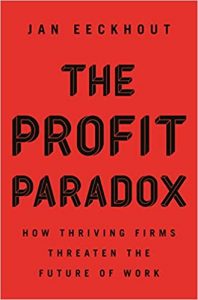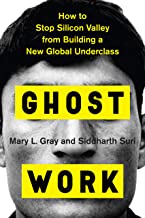I ended up with mixed reactions to Waiting for Robots: The Hired Hands of Automation by Antonio Caselli.
The powerful point it makes is the complete dependence of AI and digital technologies generally on ongoing human input. Many years ago, my husband – then a technology reporter for the BBC – was digging out the facts about a hyped dot com company called Spinvox. Its business was said not be automated voice transcription, but it turned out the work was mainly done by humans, not computers (although the story turned scratchy – the linked post responds to the company’s points). Waiting for Robots gives many examples of apps that similarly involve cheap human labour rather than digital magic – I was surprised by this. Less surprising – and indeed covered in other books such as Madhumiat Murgia’s recent Code Dependent – is the use of humans in content moderation (remember when big social media companies used to do that?), data labelling and other services from Mechanical Turk to reinforcement learning with human feedback for LLMs.
The book also claims much more as ‘labour’ and this is where I disagree. Of course big tech benefits from my digital exhaust and from content I post online such as cute dog photos. But this seems to me categorically different from often (badly) paid employment relationships. Although the stickiness of network effects or habit might keep me on a certain service, although the companies might set the defaults so they hoover up my activity data, the power dynamics are different. I can switch, for instance from X to BlueSky, or from Amazon to my local bookstore. So I’m not a fan of portraying these types of data-provision as more ‘digital labour’.
Having said that, the book makes a compelling case that robots and humans are interdependent and will remain so. Generative AI will continue to need human-produced material (‘data’) and intervention to avert model collapse. Humans are also going to have to pay for digital services so will need to have money to pay with. Focusing on the economic dynamics involved is crucial, as it is clear that the market/platform/ecosystem structures are currently tilted towards the (owners of) robots and away from humans. So, for all that I’m not persuaded by the classification of different types of ‘digital labour’ here (and find the anti-capitalist perspective on tackling the challenges unpragmatic apart from anything else), there is a lot of food for thought in Waiting for Robots.





